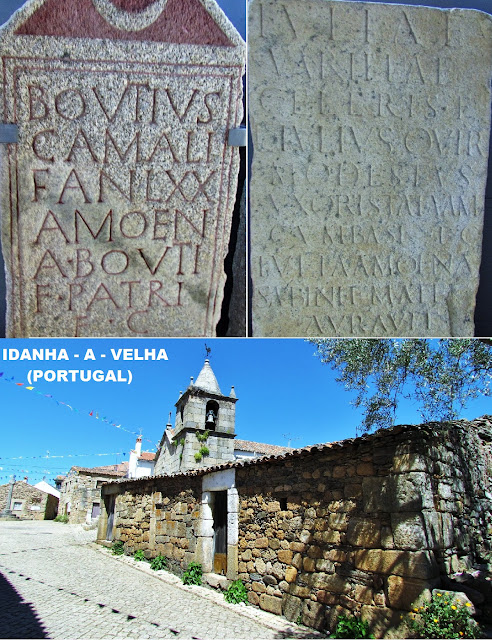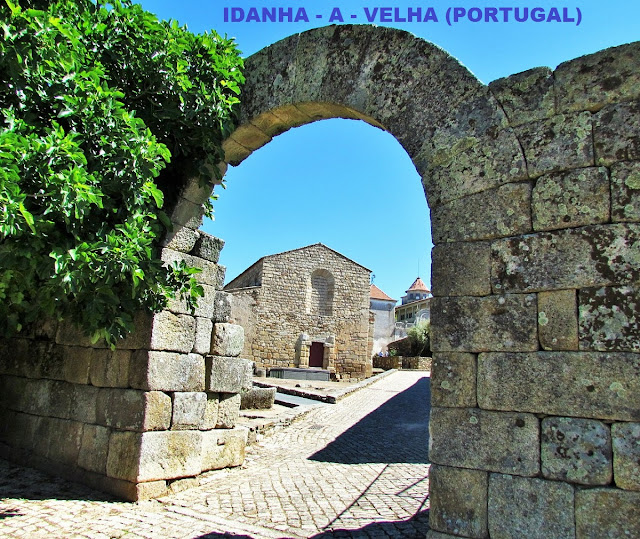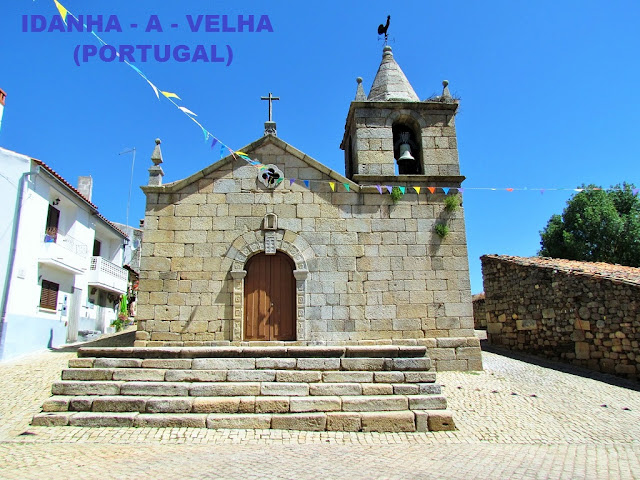IDANHA-A -VELHA
GPS: N 39.99774; W 7.14366
Idanha-a-Velha is a village in the municipality of Idanha-a-Nova, in the province of Beira Baixa, in the Center region (Beiras Region) and sub-region of Beira Interior Sul, in Portugal, with an area of 20.78 km² and 63 inhabitants (2011). Its population density is 3 inhabitants/km². It is one of the Historic Villages of Portugal.
Formed a new parish called Union of Parishes of Monsanto and Idanha-a-Velha with headquarters in Monsanto.
History
The town was founded in the period of Augustus (1st century BC) and the foundation of this population center was extremely important for Rome between Guarda (Lancia Oppidana) and Mérida (Augusta Emerita). The Roman occupation of this area is well proven by the detailed observation of the walls built between the 3rd and 4th centuries, when the Barbarian Invasions began. It is possible to identify the numerous material remains of Roman dwellings and temples existing in the village, with the reuse of stone in later constructions. In fact, this wall only surrounded part of what must have been the magnificent city of the High Empire.
The most important Roman elements were destroyed in the 5th century by the Suevi, leaving traces in very different conditions: the Alcântara Bridge, which connected Mérida (Augusta Emerita) to Astorga (Asturica), the Forum, the Podium of Venus (on which it was the Templar Tower was built), and the Baths, south of the Forum. In the council of Lugo, in 569, Idanha also participated, still not nicknamed "the Old Woman". Prosperity came with the Visigothic conquest, during which the Cathedral, the Bishops' Palace, the Episcopal Palace and the São Dâmaso Bridge were built. In 713, the Moors took the city and destroyed it. Reconquered by King Afonso III of León, it was lost again, only having been definitively taken by D. Sancho I.
Its most important landmarks are the Pelourinho, the Igreja Matriz, the Chapels of São Dâmaso, São Sebastião and Espírito Santo.
💓💓💓💓💓
SEARCH IN ALPHABETICAL ORDER
IN THE DISTRICT OF CASTELO BRANCO
💓💓💓💓💓
Return to mainland Portugal &
the Azores and Madeira islands















































